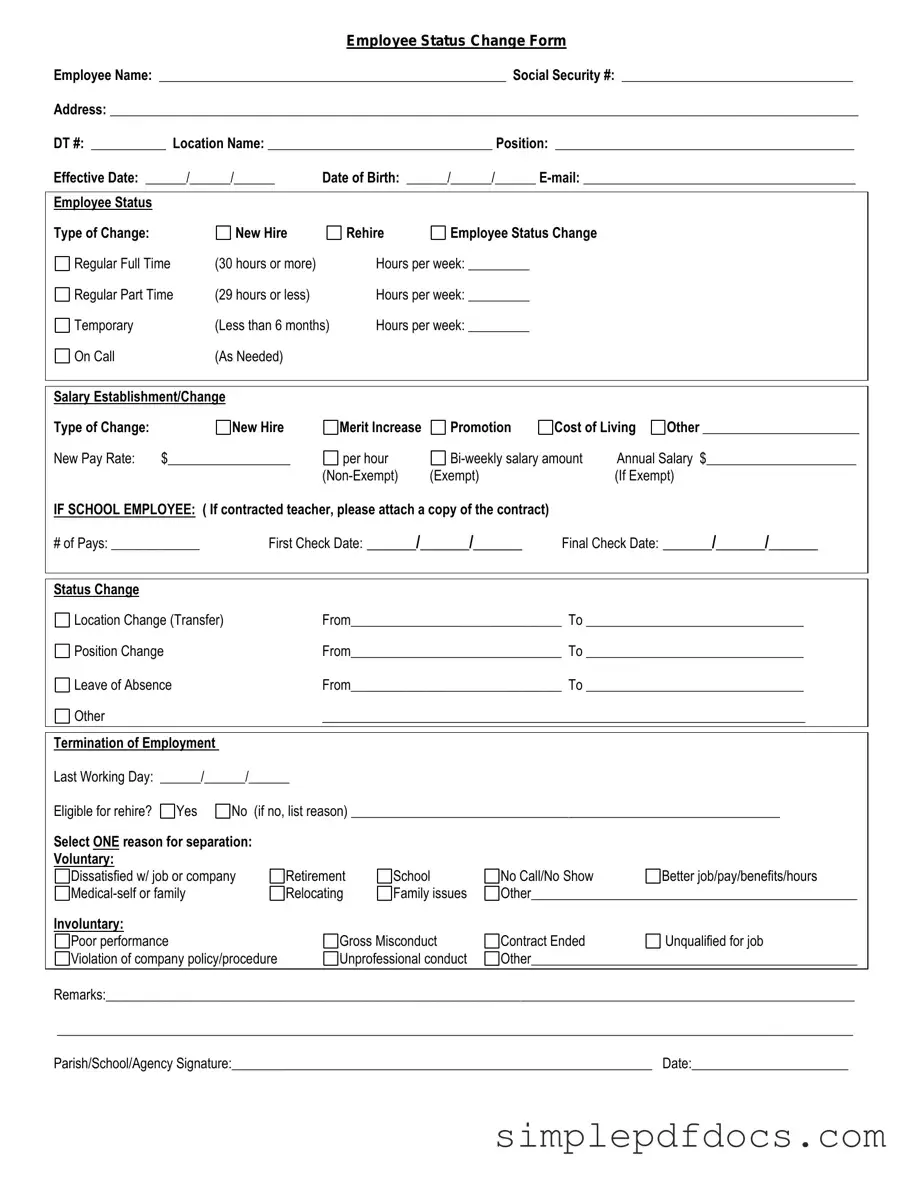Fill Your Employee Status Change Form
The Employee Status Change form is a crucial document used by employers to officially record any changes in an employee's status, such as promotions, demotions, or transfers. This form ensures that all personnel records are updated accurately, maintaining compliance with company policies and labor laws. Understanding how to properly complete and submit this form can streamline HR processes and enhance communication within the workplace.
Get Document Here
